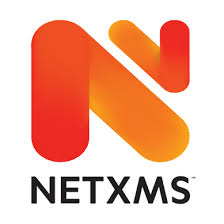NetXMS — Open Source Monitoring That Covers the Whole Stack
General Information
NetXMS is an open-source monitoring system that tries to cover everything at once — servers, network devices, apps, even custom scripts if needed. It’s not a tiny utility; it’s more like a full package that can stand in for commercial suites. Some companies use it as a free replacement for tools like PRTG or SolarWinds, especially when they want one central place to keep an eye on the entire infrastructure.
How It Works
At the core is a central server. It talks to agents installed on machines or queries devices through SNMP, WMI, or SSH. Data gets stored in its own database, then shown in either the web interface or the Java console. From there you get graphs, dashboards, and alerts. Admins usually set thresholds and rules so the system can warn them or even run scripts automatically when something breaks.
Main Functions
| Function | What It Does |
| Multi-protocol checks | SNMP, WMI, SSH, custom scripts, and native agents. |
| Agents everywhere | Runs on Windows, Linux, macOS, BSD. |
| Events & alerts | Define thresholds, send notifications, trigger actions. |
| Dashboards | Web UI with graphs, device trees, service views. |
| Scales well | From small sites to multi-branch enterprise networks. |
| Automation | Run scripts or commands when events fire. |
Installation Notes
On Linux (Ubuntu/Debian) the process usually goes like this:
– Add the NetXMS repo.
– Install packages: apt install netxms-server netxms-webui netxms-agent.
– Initialize the DB with nxdbmgr init.
– Start the server: systemctl start netxmsd.
– Log in through http://server:8080 or open the Java console.
On Windows, it’s a classic installer: run setup, pick server or agent components, connect it to a database, and finish with the wizard.
Everyday Use
Admins use NetXMS for the usual things — checking device health, watching bandwidth, catching outages before users complain. The dashboards give quick visibility, while historical graphs help with capacity planning. A neat part is scripting: for example, when a service dies, NetXMS can restart it automatically or call an external script. In bigger environments that saves a lot of manual work.
Weak Spots
The UI is functional but not pretty, especially compared to polished commercial tools. First-time setup takes time — database config, agent rollout, and thresholds. On very large deployments, some DB tuning might be needed to keep performance steady. Also, in cloud-native areas it’s not as strong as Prometheus or Grafana.
Comparison
| Tool | Platforms | Strong Sides | Best Use |
| NetXMS | Windows/Linux/macOS/BSD | Broad protocol support, free, scales well | Enterprises needing central open-source monitoring |
| Zabbix | Windows/Linux | Strong dashboards, big community | All-in-one monitoring at scale |
| Icinga 2 | Linux/Unix | Flexible configs, distributed setup | Modern Nagios-style monitoring |
| Prometheus | Multi-platform | Metrics-first, great for Kubernetes | Cloud-native environments |

